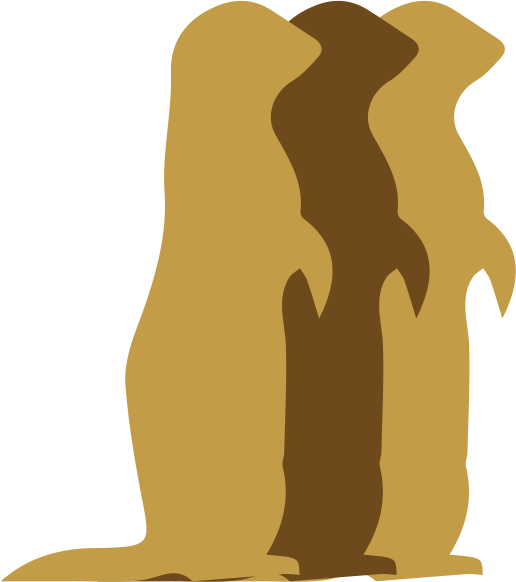In 1879 Frank Foster came to the blossoming community of Little Falls to start a new life. He found a small piece of land on the west side of town near the banks of the mighty Mississippi and next to a small waterfall. In accordance with the U.S. Homesteaders Act Mr. Foster was awarded the first homesteaders deed in Little Falls. During this time many things started to change. First, a dam was built to bring power and big business to Little Falls. Soon after a power company and a paper mill were built. With the abundance of large White Pine trees and a river to transport them, the next business to come was a lumber company. This area was a gold mine. Monstrous White Pines were removed as fast as they could be cut and floated down the river. Little Falls became a major milling center for the entire Northwest.
As the trees started to decrease some prominent businessmen, Milton Williams and A.R. Davidson, wanted to preserve a small portion of old growth forest for future generations. By this time, the land that had originally been deeded to Mr. Foster, was currently owned by L.M. Roberts and E.F. Shaw. This land seemed like a perfect spot to preserve. It was close to town and full of virgin White Pine trees. A deal for the 55 acre tract of land was initiated through the cooperation of Mayor Charles Vasaly and Mr. Milton Williams. The original cost of the land was $4,100.00, of which, $270.00 was supplied by the City of Little Falls and $730.00 was raised by smaller donations from the public. The balance of $3,000.00 was donated by the following: M. Williams $1,000.00, A. Davidson $1,000.00, C. Weyerhaeuser $500.00, and R. Musser $500.00. Through these efforts, on September 13, 1907, the land was deeded to the City of Little Falls, “for the enjoyment, pleasure, and benefit of the people of the area”.
Besides a railroad running through the northern edge and a well traveled dirt road on the southern edge, the preserved land, now called Pine Grove Park, remained untouched. Then on July 20th and 27th 1910 two fires, caused by sparks from the railroad, threatened to destroy Pine Grove Park. However, quick thinking and fast work by the neighbors of the park saved the stand of White Pine trees. Only the eastern half of the park burned and only lowland grass was lost. The next week the City Council voted to put roads through the park as “fire breaks”. These roads are still present today. Over the next few years, only general maintenance was done at the park.
In June of 1913, to give visitors more to enjoy, the Park Committee purchased and donated two Great Horned Owls to Pine Grove Park. The birds attracted considerable attention and the committee was urged to keep up with the animal additions. The Pine Grove Zoo had begun and, by September, two White-Tail Deer were acquired from the City Park of Mankato. In 1914, the addition of a Moose cow was followed by Elk from Yellowstone National Park in the spring of 1915. These larger animals attracted automobile tourists from all parts of the state and nation. With the growing public interest other animals soon followed. Some of the new animal additions included: peafowl, goats, squirrels, porcupines, woodchucks, and raccoons.
After World War I, in April 1917, the Park Committee was forced to cut costs. The decision was made that the animals that could not roam in large enclosures were “not to be replaced when they escaped from their cages”. The zookeeper at that time, Thomas Dewey, lived on Zoo grounds and his house is still there today.
Like many zoos around the country during the early 1900’s, the Pine Grove Zoo did very few improvements and had no real plan for the future. In 1926 Milton Williams, one of the original Zoo donors, passed away. As a memorial to her husband, Mrs. Williams requested that a huge rock from their property be moved to the Park. The rock, weighing several tons, was pulled by teams of horses. As they moved closer to the Park the rock was too heavy for the horses to pull, so a gas-burning tractor was finally used to push the large rock the remainder of the way. This rock still rests among the Parks majestic White Pines with its plaque that reads “The Lord is thy Keeper, Earth changes but thy Soul and God stand sure”.
The beginning of the Zoo’s existing stonework began in 1932. Stone pillars were erected on either side of the main gate by the Work Progress Administration (WPA). In 1940 the largest addition of the rock formations were erected. These included the cut granite wall along the road on the southern edge of the Zoo, the hexagon building that is now the education building, the shelter building near the playground, and the ‘council circle’ deep in the woods. In the stonework of the shelter building there are stones shaped as a diamond, a heart, a club, and a spade. All of the stone used to build these new additions came from quarries near Freedhem, Minnesota.
In 1954, shortly after the improvements made by the WPA, a number of small, wire sided, concrete floored enclosures were installed along the driving paths in the park, and four more enclosures were added in 1976. With these new enclosures came a variety of animals. Some of the animals brought in at this time included: cougars, bobcats, fox, opossum, monkeys and wolves. The Zoo soon became a novelty drive-by attraction. At the time the cages were installed not enough consideration was given to the animals and their well-being so, the Zoo soon became a center for complaints. The Zoo wouldn’t get new life until the early 1990’s.
In 1991, a group of people came together and decided to help make the Zoo portion of the park a better place for the animals and visitors. This early form of the Zoological Society worked very hard to change the perceptions of the Zoo and educate as many people as possible. They felt that the community would benefit from the Zoo’s education and conservation messages, as well as, all of Central Minnesota.
With a strong partnership between the Zoological Society and some sympathetic ears at City Hall, improvements at the Zoo started to be made. The years of 1991-92 began with remodeling the hoof stock exhibits. This gave the Bison, Elk, White-tailed deer and Pronghorn new, natural, spacious, grazing areas. Visitors were now able to get out of their cars and walk on newly landscaped paths. From late 1990 through early 2000 improvements continued. Now, the Zoo boasts large cat exhibits, a petting stable, a wolf education building, a remodeled wolf enclosure, a one-of-a-kind, state of the art bear exhibit, new food preparation facilities, quarantine areas, public restrooms, paved walk ways which give families, handicap, and elderly more accessibility, and a recently added a café for Zoo guests.
The group that made this original push for the betterment of the Zoo became an official organization in 1999 by filing letters of incorporation with the State of Minnesota. This group, now called Friends of Pine Grove Zoo, manages the Zoo for the City of Little Falls. The Friends of the Pine Grove Zoo are extremely proud of the progress that the Zoo has made, but know that the Zoo can only be as good as its plans for the future. With the great staff and wonderful volunteers our future looks bright.





